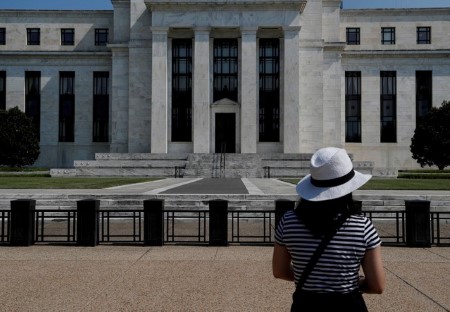




Policy Rate Updates: Double cut finale
 DOWNLOAD
DOWNLOAD

Monthly Economic Update: One for the road
 DOWNLOAD
DOWNLOAD

Inflation Update: Still low, still slow
 DOWNLOAD
DOWNLOAD


10-year yield falls near 3-week lows following Fed rate decision

NEW YORK, Jan 31 – US Treasury yields slid near three-week lows and the 10-year Treasury posted its largest daily loss since December on Wednesday after the Federal Reserve said it doesn’t expect to cut interest rates until there is more evidence that inflation is moving lower.
The Fed left benchmark rates unchanged in a rate decision that had been seen as a near-certainty by markets and followed the release of data earlier in the day showing signs of cooling in the labor market.
Investors’ attention will now likely turn toward Friday’s nonfarm payrolls report, which could influence whether the US central bank cuts rates in March as futures markets currently expect.
Yields briefly rose, indicating more selling pressure, after Fed Chair Jerome Powell appeared to take an interest rate cut in March off the table during his press conference, yet remained down for the day. Markets are now pricing in a 36% chance of a March rate cut, down from a 73% chance seen a month ago, according to CME’s FedWatch Tool FEDWATCH. At the same time, futures markets now reflect a nearly 90% chance of a rate cut in May.
Powell was “preserving some of that flexibility and he’s still providing the direction that the Fed is going to be moving to (an) easing stance,” said Keith Lerner, chief market strategist at Truist Wealth. “Markets were bouncing around a lot, but in general it’s in line with expectations and not a major shift.”
The yield on 10-year Treasury notes was down 8 basis points at 3.977%. It fell 19.7 basis points during the month of January, posting its best monthly price performance since October 2023. Yields move in the opposite direction of prices.
The yield on the 30-year Treasury bond was down 5.8 basis points at 4.220%.
US labor costs rose less than expected in the fourth quarter, leading to the smallest annual increase in two years, the Labor Department said. Private payrolls, meanwhile, increased by 107,000 jobs last month, the ADP National Employment Report showed on Wednesday. Economists polled by Reuters had forecast private payrolls rising by 145,000. Job growth for December was revised lower as well.
“We continue to expect a moderation in wage gains in the coming months as labor market conditions soften and labor demand comes into better alignment with labor supply,” said Gregory Daco, chief economist at EY.
The US Treasury Department said on Wednesday it plans to continue gradually raising coupon auction sizes through April, but beyond that, it does not expect further increases for at least the next several quarters.
The two-year US Treasury yield, which typically moves in step with interest rate expectations, was down 8.4 basis points at 4.275% and at one point was down 13.8 basis points, its largest daily loss since Jan. 12. During the month of January, it rose 10.9 basis points, its biggest monthly gain since July 2023.
A closely watched part of the US Treasury yield curve measuring the gap between yields on two- and 10-year Treasury notes, seen as an indicator of economic expectations, was at -28.5 basis points. The curve steepened 6.2 basis points over the month of January, leaving it the least inverted since October.
(Reporting by David Randall. Additional reporting by Gertrude Chavez-Dreyfuss; Editing by Franklin Paul, Chizu Nomiyama, Leslie Adler, and Jonathan Oatis)
This article originally appeared on reuters.com





 By Reuters
By Reuters